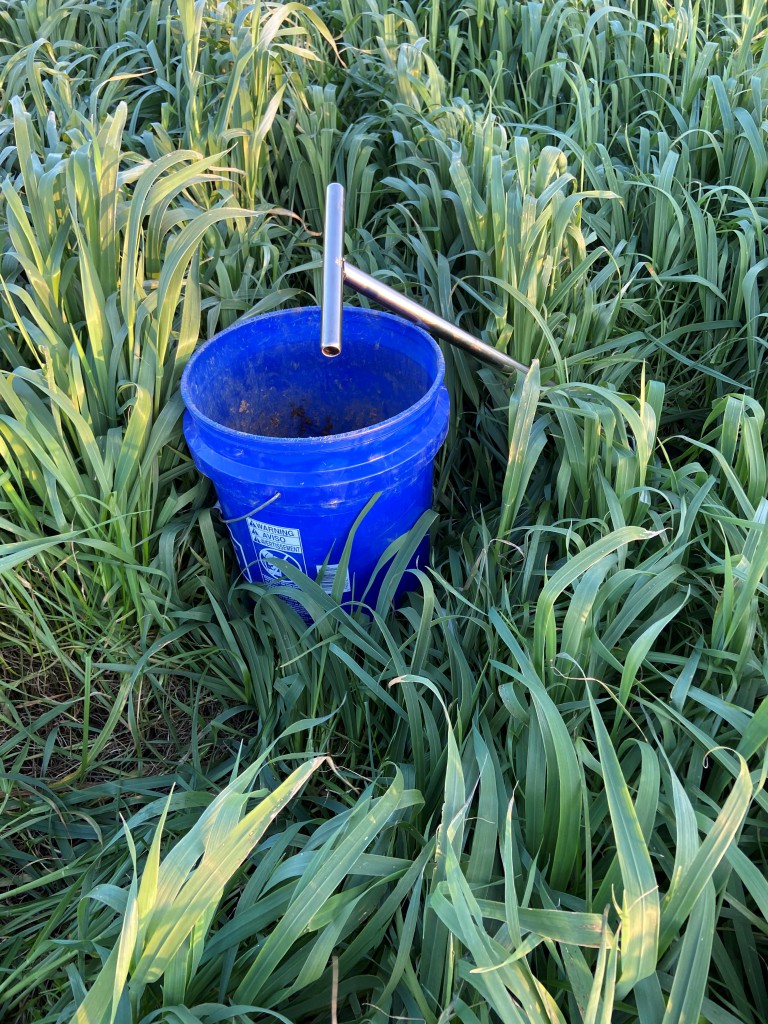Masks, hand washing, social distancing, vaccines, quarantine; words that are excessively familiar this day and time. What do you think of when you hear these words? My first thought is health. You have now began checking your website because you supposedly pulled up UGA Extension’s Forage Team Newsletter, but don’t worry, you are in the right place. Now, I am sure you are slightly confused because forages and health are not exactly two words we use often in the same sentence. What if I told you soil health has everything to do with forage production? Would you believe me?
Oxford defines soil as “the upper layer of earth in which plants grow, a black or dark brown material typically consisting of a mixture of organic remains, clay, and rock particles.” Most of us would agree with this definition but then again, most of us would agree that it is so much more than the upper layer of earth in which plants grow. As agriculturalists, we know that soil provides water and nutrients to the roots of a plant but sometimes we under estimate the true value of soil. Soil properties critical to forage production include soil structure, organic matter, acidity or pH, and soil nutrient levels.
Soil structure is the manner in which soil particles are arranged. This structure is primarily comprised of soil texture and what percentage of your soil is sand, silt, and clay. The structure of the soil will determine pore size and pore space, which affects the water holding capacity and drainage. It is simple really, a soil structure that has a higher percentage of sand will drain more quickly but it will also not hold water as well in a drought compared to a soil structure with more clay. While soil structure and texture remain a huge part of our soil health system, there is very little we can do in agriculture to alter and change the natural structure of a soil.
What we can change or make significant effort in improving are the measurements of organic matter, pH, and soil nutrients. Organic matter is the measure of soil that consists of decomposing plant or animal tissue. This organic matter supports soil microbes that are critical to producing and creating many of the required soil nutrients a plant needs to thrive. Other benefits of soil organic matter include supporting nitrogen-fixing bacteria used by legume’s nitrogen nodule roots, increasing the ability of a soil to drain and hold moisture, and preventing some soil compaction. We can alter soil organic components by reducing tillage and soil disturbance.
Soil pH is critical to the overall health of not only our plants and forages but also the general soil health of an area. Measuring soil pH, we find that most forage crops grow best between 6.0-6.5 with some legume crops being closer to 7.0. So what happens when we do not meet these parameters of soil pH? When soils are too acidic, crop growth is reduced, aluminum becomes available resulting in aluminum toxicity in some plants. When soil pH is too high, we see similar plant growth reductions as we do when soil pH is too low. However, it is rare in Georgia that we see soil pH levels above 7.0. Decreasing soil pH is relatively easy and while increasing soil pH is a little more difficult, it can be done.
Like organic matter and soil pH, farmers can alter the soil nutrient profile to beneficially impact forage health and growth. Soil provides roughly 13 plant required nutrients. Those nutrients are categories into three components: macronutrients, secondary nutrients, and micronutrients. Macronutrients include nitrogen, phosphorus, and potassium. Secondary nutrients are calcium, magnesium, and sulfur. The micronutrients soil provides to a plant include boron, copper, manganese, zinc, iron, molybdenum, and chlorine.

While we know that soil organic matter, acidity, and nutrient content can be changed, we need to ask two questions. 1. How do we know how much of either component we have in our soil? and 2. What do we do when we know those levels? Both answers require a simple answer. Contact your local county extension agent. Okay, so not quite the most in-depth answer, however each county extension agent will give you this answer, “let’s send off a soil sample.” A soil sample for a hay field should be collected every year and a pasture sample should be sent off every 2-3 years. To take a soil sample you should collect 8-10 core samples from no more than 15 acres to mix into one sample. It is important you label the soil bag from your extension office with all of the correct information. In addition to completely filling out the soil bag, it is important you know where each sample is taken on your farm. This sample will tell you a variety of information including macronutrients levels, secondary nutrient levels, soil pH, and recommendations on how much and when to apply nutrients or lime to your soil. Using these recommendations, you along with your county extension agent can make plans to increase the soil health on your farm to ensure the best starting point for your forages and crop production.
While most of us are tired of the current buzzwords like health, we can think about health outside of the box to ensure that not only do we remain healthy and work on our health, but we do not forget about the health of our soil, forage, and animals health.